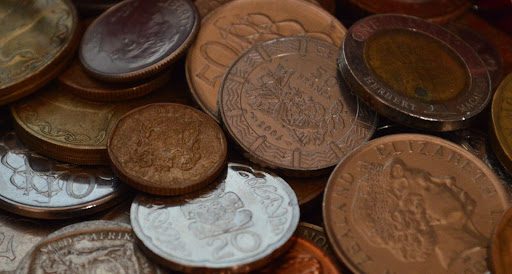Unlike gold, which has a tangible value, a fiat currency is backed only by the government’s authority. Fiat money includes the U.S. dollar, the euro, the pound, and the yen.
“Fiat” refers to “authoritative or arbitrary order.” So in the case of “fiat money,” a mandate from the government renders them legal tender and gives them value. When nations abandoned the gold standard, in which currencies are tied to gold, the present fiat-money system emerged in the twentieth century. Across 180 fiat currencies are in use now around the globe.
A currency’s value is determined by its market supply and demand. Supply is controlled by central banks, which determine how much money the economy needs and then create it appropriately. The greatest danger is that they will create too much money, resulting in a period of hyperinflation—rapid price rises that are out of control and may cause economic disaster.
For a fiat currency to be considered trustworthy, it must have a stable government and a central bank to maintain its supply. The contemporary monetary system is based on the fiat-currency system.
What’s the Difference?
As a means of commerce and a store of value, currencies are essential. The rapid increase in cryptocurrency investment has raised doubts about the viability of fiat currencies as a means of exchange.
A new kind of currency, the cryptographic digital coin known as Bitcoin, was introduced in 2009. It is, in essence, a virtual currency that is not controlled by a single authority, like government-issued fiat currencies.
The blockchain is a permanent record of all transactions conducted using cryptocurrency. It’s a public database since this ledger is accessible to everybody. Because only transaction information is publicly available, users of cryptocurrencies enjoy a degree of privacy. A user’s identity may be traceable, but the information is not recorded.
Fiat or Crypto for Payment?
Because of its capacity to process transactions instantly, some advocates of cryptocurrencies believe that digital currencies will eventually replace fiat money as the primary form of payment. They make the case that blockchain technology is trusted to back cryptocurrencies if a government is trusted to support a fiat currency.
However, as a means of trade, cryptocurrencies like Bitcoin haven’t really taken off yet. Some sellers and companies accept crypto as payment; however, most transactions are carried out using fiat currency. Fiat is essential in many trades, especially on platforms like Binance, Kucoin, Bitcodes, etc.
Of course, when buying crypto with fiat currency on any cryptocurrency platform, choosing one that is in line with current financial security regulations and implements security protocols is essential. For example, as mentioned on its official website: “Biticodes take data privacy seriously. We employ novel security and SSL algorithms to ensure the safety of your data and funds.” By doing so, you’ve completed a vital step in laying the foundations of a safe and secure trading journey.
Those who oppose using cryptocurrencies as a means of payment point out that they are inherently unstable. A person’s income might drastically increase or decrease in a few days if they received their salary in Bitcoin.
Store of Value: Fiat and Crypto

Instead, cryptocurrencies like Bitcoin, although still in their infancy, cryptocurrencies like Bitcoin have served as a kind of wealth storage, similar to how investors have traditionally positioned themselves in precious metals.
Cryptocurrencies such as Bitcoin must be “mined,” which restricts their supply, much like precious metals. In actuality, the quantity of Bitcoins that may be mined is limited to 21 million.
Meanwhile, the quantity of fiat currencies, such as the US dollar, is almost unbounded. Around $2 trillion of U.S. paper money will be in circulation worldwide by the end of December 2020. Federal Reserve’s balance sheet—a proxy for the total quantity of money in the system—has expanded astronomically since 2007, as the central bank battled recessions during the financial crisis of 2008 and the Covid-19 epidemic of 2020.
It’s also worth noting that the cryptocurrency market has been flooded with money from investors and speculators who believe their currencies will either maintain or rise in value. Despite this, many argue that digital currency is not a dependable store of value because of its volatility.
What Are Central Bank Digital Currencies (CBDC)?
Virtual currencies that a nation’s central bank backs might be an intriguing development in the future.
A January 2020 Bank of International Settlements poll indicated that 80 percent of central banks were exploring and experimenting with CBDCs, even though cryptocurrencies, by definition, are decentralized and do not have an authority supporting them.
Pros and Cons of Fiat Money

Paper currency is convenient since it’s simple to make, transport, and trade because it’s small and light. Being decoupled from a physical commodity market like gold has apparent advantages. This reduces the danger of outside entities influencing a metal’s supply and demand to skew currency values.
Fiat currencies have the benefit of allowing governments to regulate the amount of money in circulation. When managing economic cycles, deciding how much money to produce is a valuable instrument.
The Federal Reserve, for example, has a dual mandate: to keep unemployment and inflation in check simultaneously. Fed may raise interest rates if inflation threatens to outpace its goal of reducing unemployment by increasing the amount of money in circulation.
In a fiat currency system, the greatest danger is that the central bank will make an error in its calculations or management and create too much money, which might lead to hyperinflation if inflation rises by more than 50% per month.
Final Thoughts
The Dollar, the Euro, the Yen, and so on are all examples of fiat money. Cryptocurrencies and tokens, on the other hand, are digital assets. The fundamental value of fiat currency is zero. A government and central bank are responsible for protecting its currency’s value while ensuring that an economy has enough money to flourish. Former Federal Reserve Chairman Paul Volcker once said, “It is a governmental obligation to safeguard the value of the money they issue. And if they don’t, it weakens the public’s faith in the government.”
In certain circles, it is claimed that cryptocurrencies will eventually overtake fiat as a currency. Since 2017, the value and appeal of cryptocurrencies like Bitcoin have increased significantly. There is still a long way to go before they become a mainstream payment method for products and services. Some investors argue that digital currencies are not a convenient store of value because of the volatility in the market.



































